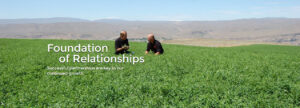The next few weeks will see the end to both Alfalfa and Timothy hay harvest seasons. Both crops were heavily affected by the numerous rain showers that fell over the course of the summer and early fall. Our staff will be working very hard to support our customers to the best of our abilities and we appreciate the strong teamwork of our business partners to provide the best results possible.

The 2nd cutting Timothy hay harvest is nearly wrapped up. A few growers are still working on getting their crop in. Rain had already delayed harvest for many, now with cooler temperatures throughout the area, growers are finding it difficult to dry the hay enough to bale.
The 2013 Timothy Hay harvest has experienced significant setbacks throughout the season. Growers have been continually challenged by inclement weather. Heavy and sporadic rains early in the summer led to the worst 1st cutting Timothy hay harvest on record. The poor weather conditions also struck during 2nd cutting. All Timothy hay growing regions experienced significant difficulties in harvesting their hay. Severe storms followed untimely rains as fields were blanketed by heavy rain and damaged by rough winds. These challenging conditions during 2nd cutting coupled with the trying 1st cutting have resulted in very limited supplies of upper grade Timothy hay. Overall, much of the crop is in the lower grades.
In the Columbia Basin, growers are completing their last harvest for Alfalfa. Those who got an early start or had a good harvest window in earlier cuttings are working on getting their 4th cutting of Alfalfa off the fields and into the bale. Those who experienced delays across the growing season are finishing up their 3rd cutting. As with the Timothy harvest, storms have played a part in delaying harvest and the availability of high testing hay or good green hay will be very limited. The photo above shows how the strong winds scattered hay forcing farmers to run rakes through the fields to remake windrows before bailing.
To have this blog from Anderson Hay delivered directly to your email, subscribe above on the right.


